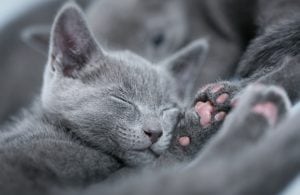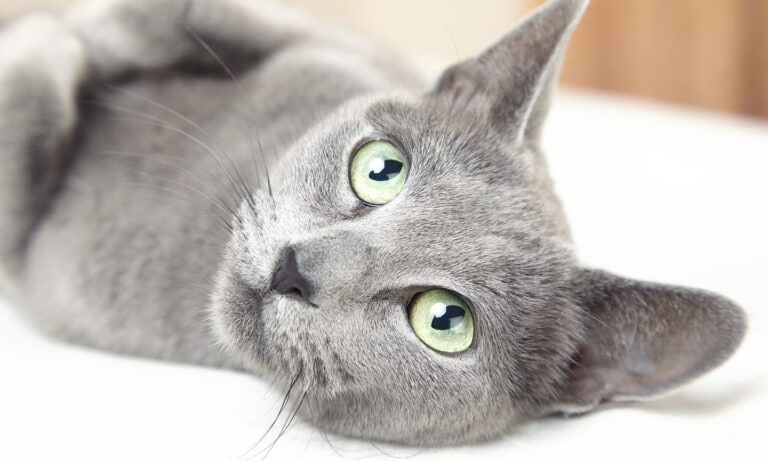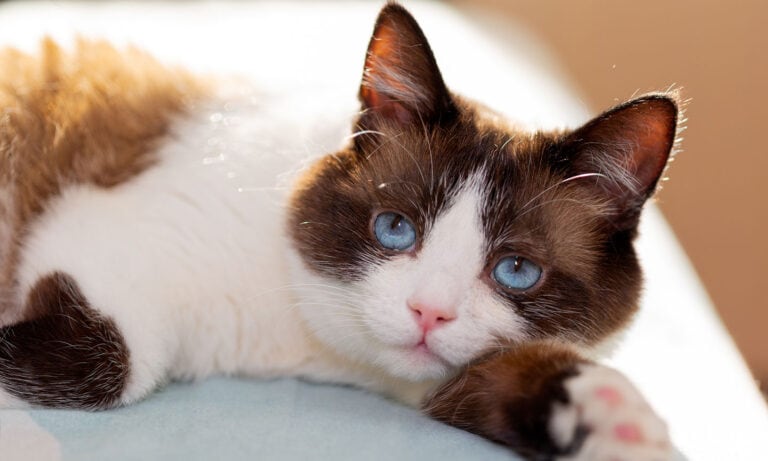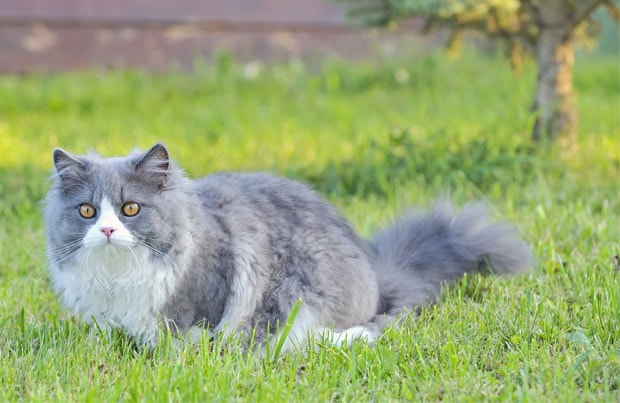While some cats are known for their zany behaviors and off-the-wall antics, others may prefer relaxing on the couch and spending quiet time with their owners to their peer’s rough-and-tumble lifestyle. While breed alone cannot determine a cat’s personality, some are known for their peaceful nature and homebody tendencies. We’ve asked Joan Miller, chair of outreach and education for the Cat Fanciers’ Association Chair, to share the top ten most docile cat breeds.
Keep in mind, however, that a docile personality or seemingly fearful nature will not always mean that a cat is not aggressive. Aggression, or lack thereof, depends on many things including a cat’s gender, individual personality and the environment in which it has grown up. In fact, Miller says, fear itself can often trigger aggression in cats, making it crucial to do as much research as you can about a potential pet before taking it home and learn to understand its behaviors before introducing it to any new stimuli that could be fear-inducing.
Ragdoll
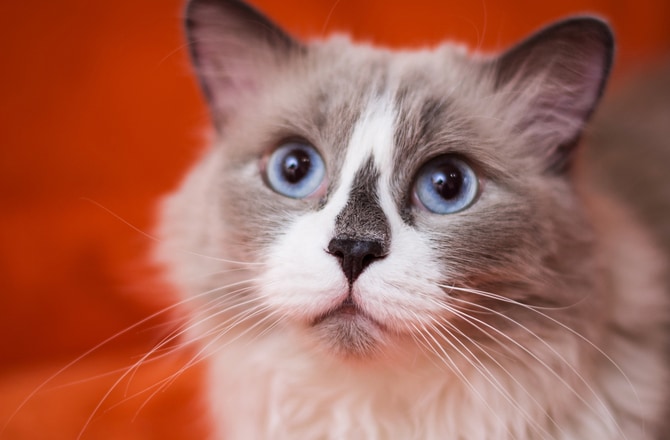
A large, heavy breed with a semi-long, silky coat, the Ragdoll is a very relaxed, quiet breed with a low activity level, according to Miller. Extremely affectionate with its people and friendly towards strangers and other cats, the Ragdoll can generally adapt well to new environments and rarely show aggression to either people or other cats, provided they’re socialized properly from a young age. When you pick one up, it has a tendency to go limp in your arms like a doll, which is how the breed got its name.
via Shutterstock
Persian
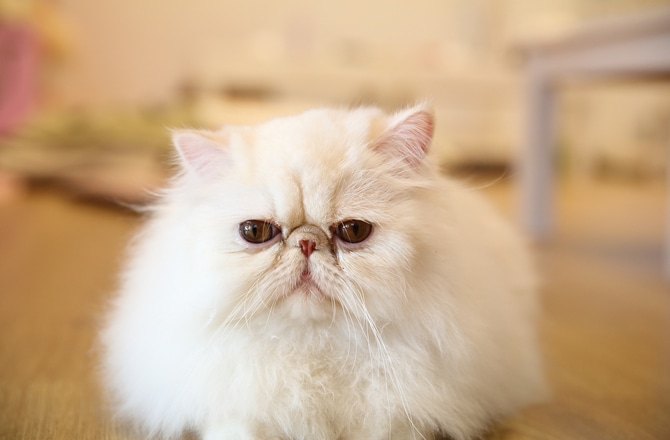
With a calm, passive personality, the Persian is the epitome of tranquility. Quiet and laid-back, the breed can be fearful (and may hide) around strangers but is generally adaptable and able to tolerate a variety of environments. Persians do best in a quiet home with a nicely set routine, however, and tend not to like loud music or too much noise.
“A party is something they will avoid,” Miller said. “Not so much because of fear as annoyance and disruption of their home security. They’re non-territorial, though, and tend to be easy going at shows and with other cats.”
via Shutterstock
Selkirk Rex
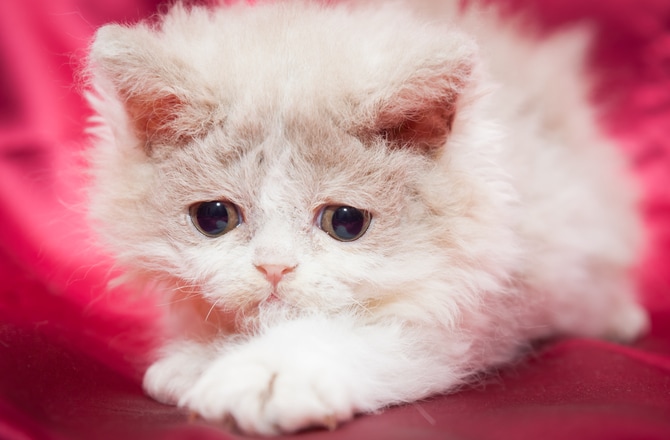
Easily recognized by their curly coat and broad head, the Selkirk Rex shares many its quiet characteristics with its parent breed, the Persian. Slightly more playful and active than their relatives, the Selkirk is also easy to handle in the show ring, according to Miller.
Purposeful and selective breeding has helped remove fear from many breeds, Miller said, as being docile without being fearful is an important quality for both show cats and house pets. However, fear based aggression is a basic nature of all cats, and must be considered when introducing a cat of any breed to a new home or other animals.
via Shutterstock
Exotic
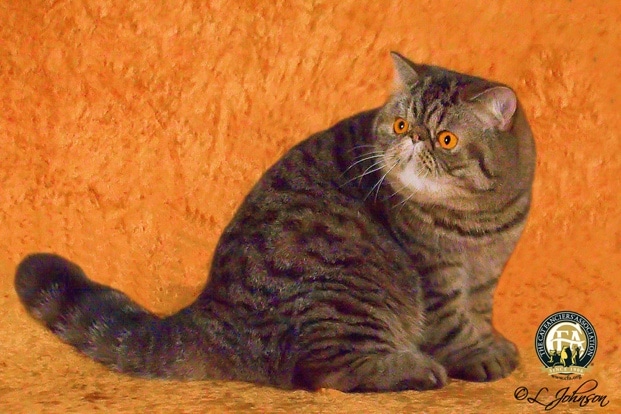
A medium sized breed with a large, round head and face, the Exotic is another Persian relative that is still outcrossed to Persians today, Miller said. The breed meets the same standards for the Persian, and therefore has a similarly quiet and peaceful personality, except for its coat, which is short. The Exotic also tends to be slightly more active than its Persian relatives.
Because cats naturally have a “fight or flee” reaction when faced with something they perceive to be dangerous—like a quickly moving object, loud sound or rambunctious child or pet—its important to make your cat feel comfortable in a new situation. Miller suggests starting your cat in a carrier to introduce it to a new place and help it feel more comfortable and calm.
“If a cat is let loose in a strange room, it will look for a place to hide immediately, like under a bed, sofa or bench,” Miller said. “When carried around in a carrier and placed in a spot where it can watch activity, the cat will eventually be curious and want to explore.”
Larry Johnson via Johnson Photography
Maine Coon
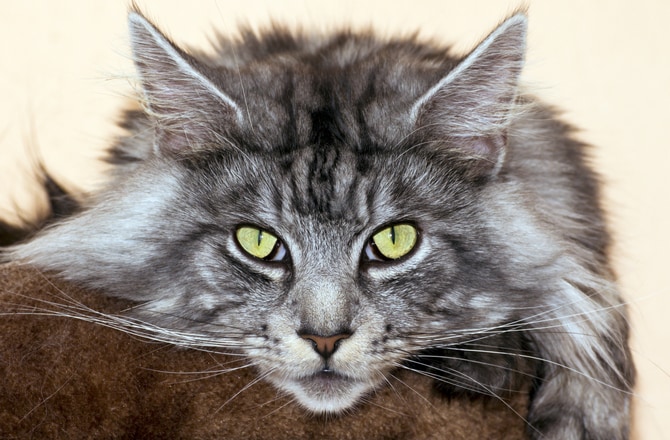
Known as the “gentle giants” of the cat world, the Maine Coon is one of the largest domestic breeds of cat and has attained its winning personality over 100 years of selective breeding, according to Miller. With a strong build and a broad chest, the breed is consistently quiet, affectionate towards its owners and non-aggressive towards both people and other cats. Though they are quiet and generally peace loving, they tend to be outgoing and are not fearful of strangers.
via Shutterstock
Siberian Forest Cat

Another large, heavy breed, the Siberian Forest Cat is social with people and other cats but is generally mellow, quiet and very laid back. At ease in both a show hall and home environment, Siberian Forest Cats are generally unconcerned about other cats and will often roll onto its back to allow strangers to rub its belly, which is a sign of trust, Miller said. Affectionate and intelligent, the breed likes to solve its own problems and is strangely attracted to water, so don’t be surprised to find it playing in the sink or taking an occasional dip.
via Shutterstock
Tonkinese
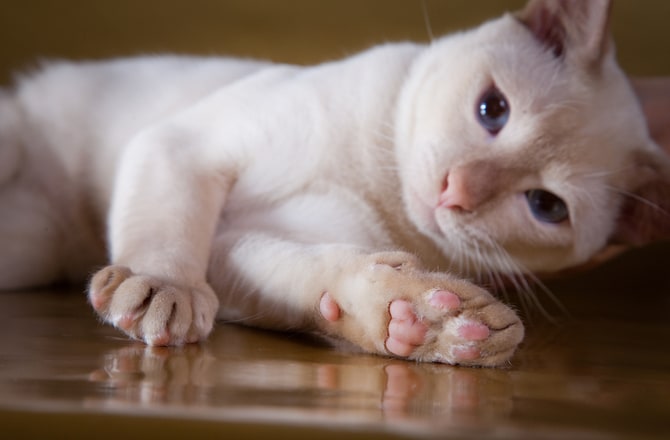
A breed that was established as the result of mixing the Burmese with the Siamese, the Tonkinese has the very best of both its parent breeds, Miller said. Affectionate like their parent breeds, the Tonk is not nearly as vocal as its Siamese relatives and is devoted to its owner. Medium in size with a muscular build, the Tonkinese is a bit more active and adventurous than some of the other breeds on this list and can be easily trained to walk on a leash.
via Shutterstock
Russian Blue
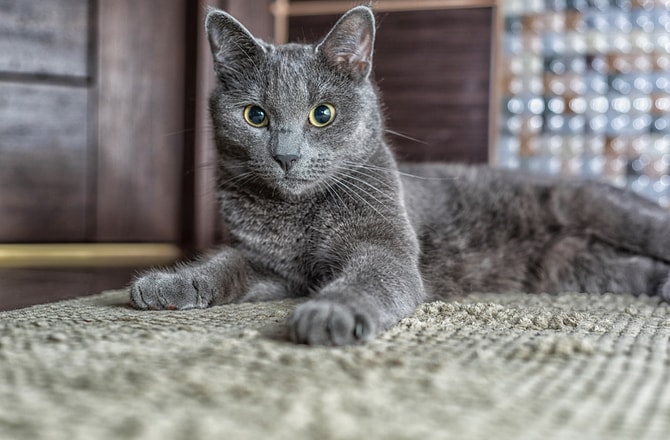
Considered the ultimate homebody for many years, the Russian Blue has always been the happiest in its home with its own family and a particular routine, Miller says, and has been difficult to show because of its discomfort in new places. However, the breed has evolved into a more outgoing and less fearful show cat and still makes an excellent companion for a person looking for a devoted, quiet companion. Recognized easily by its double coat, the Russian Blue has dense, silky fur that stands out at a 45-degree angle, allowing you to trace patterns into it.
via Shutterstock
Burmese
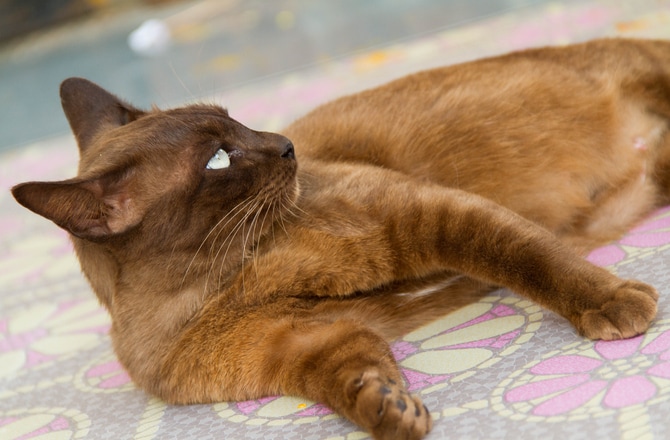
A devoted lap cat that is also affectionate towards strangers, the Burmese is not known to run and hide from people but instead likes to insert itself into the action around the home in a friendly, calm manner. Decidedly more vocal than some of the other breeds on this list, the Burmese may be chatty and look to strike up a conversation with you whenever it desires. Intelligent and loving, expect your Burmese to snuggle up with you in bed or spend time at your side whenever you’re at home.
via Shutterstock
Korat

Similarly to the Russian Blue, the Korat is a complete homebody that is devoted to its people and prefers to be in safe, familiar surroundings. This nature makes it difficult to show the breed at times, Miller said, and they will sometimes voice their displeasure in the ring when being handled. Though the breed may seem fearful in a new environment, Miller said that she has not found the breed to be aggressive towards people in her experience.
In order to comfortably introduce a cat to a new environment, situation or pet, it’s imperative to take things slowly, as cats generally do not like changes in their routine. When introducing a cat to a new environment, set up a safe place or space for them to retreat to if needed and establish a set routine for them. Once they’re settled and feel comfortable, you can begin to gradually and slowly introduce them to additional stimuli and changes, like a new pet or child.
While kittens can adapt to a new environment is just a few days, adult cats can take a more time to adjust to a new place or stimuli and make need a few weeks or months, Miller said. If you can begins to hiss or show any signs of pending aggression, back off the introduction to prevent further discomfort. Patience, Miller says, will pay off in these situations.
via Shutterstock

Jessica spends her days trying not to helicopter parent her beloved shelter pup, Darwin.
Share:
